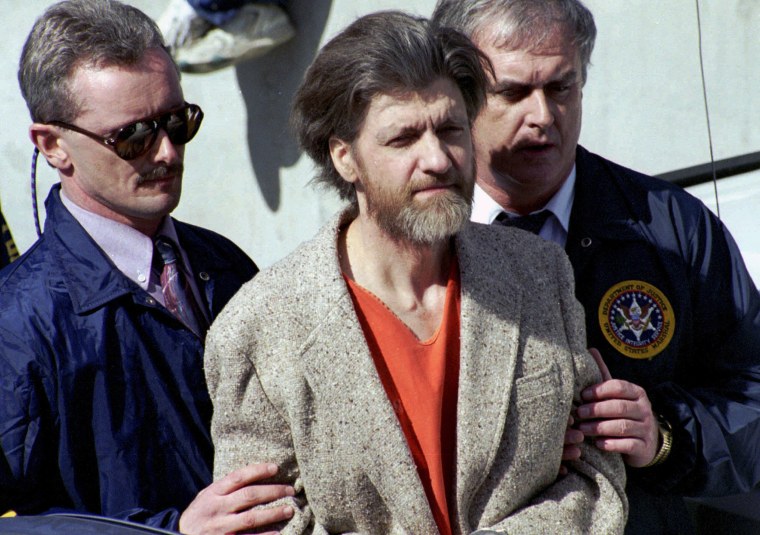Ted Kaczynski, the man known as the Unabomber, who was serving a life sentence without the possibility of parole for a series of bombing across the U.S. that killed three people, was found dead in his North Carolina prison cell on Saturday, the Federal Bureau of Prisons confirmed. He was 81.
Kaczynski, who was convicted for a series of bombings targeting scientists, was being held in North Carolina after being transferred in 2021 from a maximum security Colorado prison because of his declining health.
A cause of death was not released.

Kaczynski was serving time following his 1996 arrest at the primitive cabin where he was living in western Montana. He pleaded guilty to setting 16 explosions that killed three people and injured 23 others in various parts of the country between 1978 and 1995.
The deadly homemade bombs that Kaczynski sent by mail — including an altitude-triggered explosion that went off as planned on an American Airlines flight — changed the way Americans sent packages and boarded airplanes.
A 1995 threat to blow up a plane out of Los Angeles before the end of the July 4 weekend threw air travel and mail delivery into chaos. The Unabomber later claimed it was a “prank.”
The Harvard-trained mathematician had railed against the effects of advanced technology and led authorities on the nation’s longest and costliest manhunt. The FBI dubbed him the Unabomber because his early targets seemed to be universities and airlines.
In September 1995, The Washington Post in conjunction with The New York Times published his anti-technology manifesto, “Industrial Society and Its Future.” The manifesto was printed at the urging of federal authorities, after the bomber said he would desist from terrorism if a national publication published his treatise.
The treatise led his brother David and David’s wife, Linda Patrik, to recognize his writing and turn him in to the FBI.
Authorities in April 1996 found Kaczynski outside Lincoln, Montana, in a 10-by-14-foot (3-by-4-meter) plywood and tarpaper cabin where he’d been living since the 1970s. It was filled with journals, a coded diary, explosive ingredients and two completed bombs.
Kaczynski hated the idea of being viewed as mentally ill and during his trial tried to fire his attorneys when they wanted to mount an insanity defense. He eventually pleaded guilty rather than let his attorneys proceed.
In his personal journals released at trial by the government at the request of the victims’ families, Kaczynski described his motive as “simply personal revenge.”
“I often had fantasies of killing the kind of people I hated — i.e., government officials, police, computer scientists, the rowdy type of college students who left their beer cans in the arboretum, etc., etc., etc.,″ he wrote.
Kaczynski killed computer rental store owner Hugh Scrutton, advertising executive Thomas Mosser and timber industry lobbyist Gilbert Murray. California geneticist Charles Epstein and Yale University computer expert David Gelernter were maimed by bombs two days apart in June 1993.